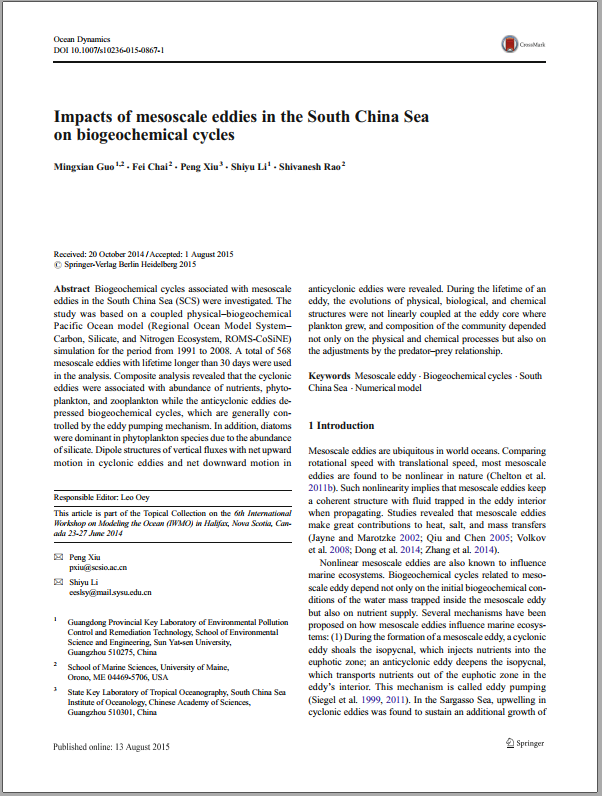Abstract
Biogeochemical cycles associated with mesoscale eddies in the South China Sea (SCS) were investigated. The study was based on a coupled physical–biogeochemical Pacific Ocean model (Regional Ocean Model System–Carbon, Silicate, and Nitrogen Ecosystem, ROMS-CoSiNE) simulation for the period from 1991 to 2008. A total of 568 mesoscale eddies with lifetime longer than 30 days were used in the analysis. Composite analysis revealed that the cyclonic eddies were associated with abundance of nutrients, phytoplankton, and zooplankton while the anticyclonic eddies depressed biogeochemical cycles, which are generally controlled by the eddy pumping mechanism. In addition, diatoms were dominant in phytoplankton species due to the abundance of silicate. Dipole structures of vertical fluxes with net upward motion in cyclonic eddies and net downward motion in anticyclonic eddies were revealed. During the lifetime of an eddy, the evolutions of physical, biological, and chemical structures were not linearly coupled at the eddy core where plankton grew, and composition of the community depended not only on the physical and chemical processes but also on the adjustments by the predator–prey relationship.




 粤公网安备44011502001245号
粤公网安备44011502001245号